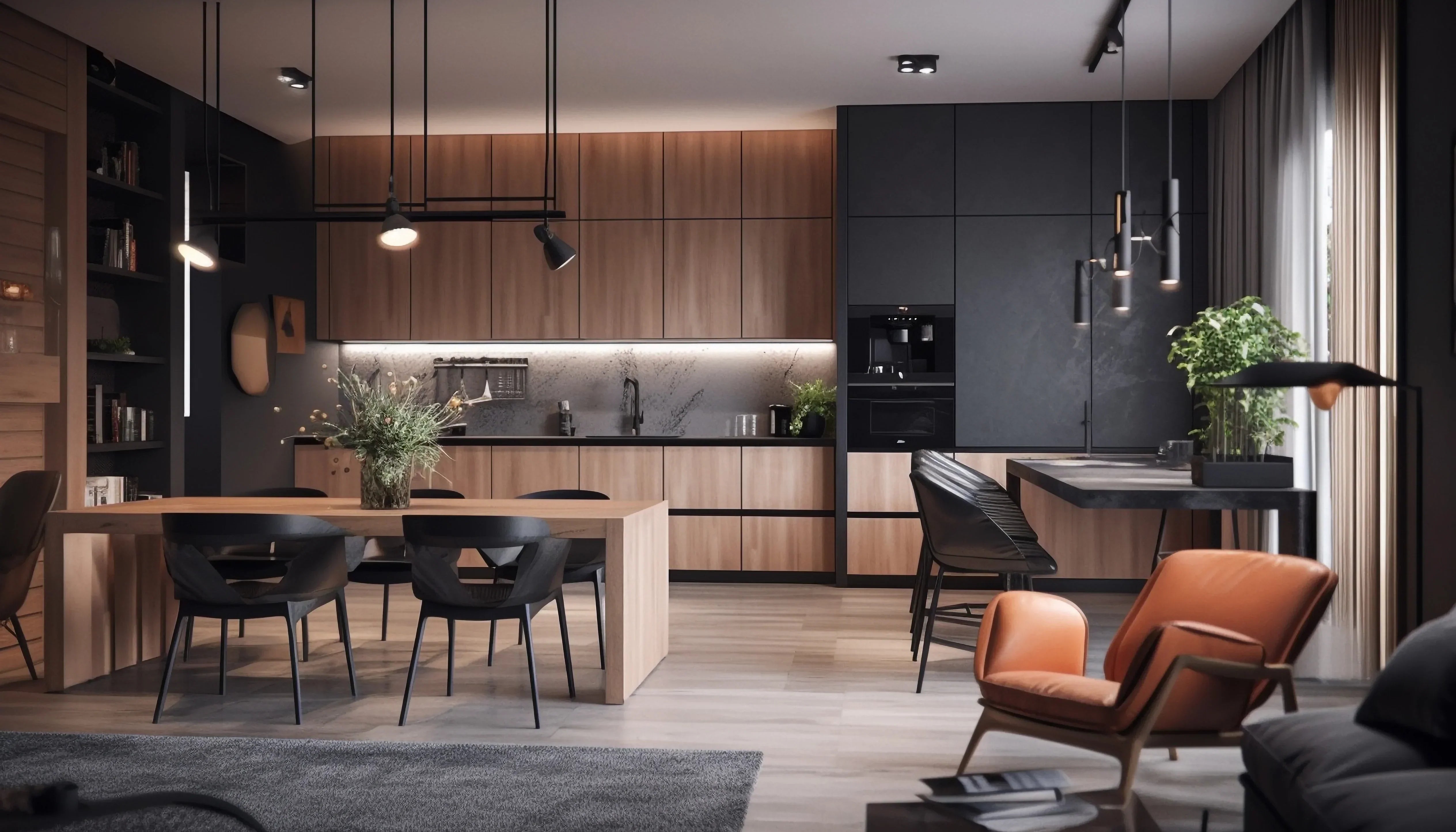Kitchen lighting: how to combine a chandelier, under-cabinet lighting and spotlights?
Kitchen lighting plays a crucial role not only in terms of functionality but also in creating a cozy atmosphere. The right light allows for comfortable cooking, convenient use of work areas and the creation of a pleasant ambiance. To achieve this, it's important to use multi-level lighting, avoiding common mistakes. In this article, we will analyze kitchen lighting options, the rules for combining them, and optimal solutions for any interior.
Main types of kitchen lighting
-
General lighting
This is the main source of light that evenly distributes illumination throughout the kitchen. It includes:
-
ceiling chandeliers;
-
built-in or surface-mounted fixtures;
-
pendant lights above the dining area.
When choosing general lighting, it's important to consider the ceiling height and the size of the room. For small kitchens, built-in spotlights are suitable, while for spacious ones, pendant chandeliers with adjustable height are ideal.
-
Task lighting
It provides high-quality illumination for functional areas — countertops, sinks and stoves. The following lighting are used:
-
LED strips under upper cabinets;
-
built-in spotlights;
-
local wall sconces with directed light.
It is important to correctly calculate the lighting in the kitchen so that work areas are evenly lit without glare and shadows.
-
Accent lighting
It creates an atmosphere and decorates the interior. It can be:
-
backlighting for open shelves and niches;
-
LED strips along the perimeter of the ceiling;
-
decorative lights in the dining area.
Accent lighting helps to zone the space and gives the interior individuality.
How to combine light correctly?
-
Secrets of combining different light sources
For harmonious lighting in the kitchen, it is important to consider several rules:
-
combine warm and neutral light: warm light (2700 — 3500K) is suitable for the dining area, while neutral light (4000 — 4500K) is for work surfaces;
-
use different levels of lighting: general, task and accent lighting should complement each other;
-
avoid excessive light: overly bright lighting makes the interior uncomfortable.
-
How to distribute lighting depending on kitchen size?
-
For a small kitchen — minimalist built-in fixtures, local backlighting.
-
For a medium-sized kitchen — combined lighting with a chandelier, spotlights and strips.
-
For a spacious kitchen — zoning of light with different lighting scenarios.
-
How to use smart lighting systems?
Modern technologies allow you to make lighting functional and economical:
-
dimmers adjust the brightness of the light;
-
smart bulbs change the temperature and color of the light;
-
motion sensors automatically turn on backlighting in work areas.
Choosing lamps and fixtures for the kitchen
-
What light temperature suits best?
-
Warm light (2700 — 3500K) creates a cozy atmosphere, suitable for the dining area.
-
Neutral light (4000 — 4500K) comfortable for work, used for task lighting.
-
Cool light (5000 — 6500K) is rarely used in the kitchen, as it makes the interior less cozy.
-
Which materials and designs are most practical?
When choosing lighting fixtures, consider:
-
materials — glass, metal, ceramics are more durable and easy to clean;
-
shape of fixtures — compact built-in models are suitable for small kitchens, while pendant chandeliers will decorate a spacious room.
Conclusion
Competently designed lighting in the kitchen makes it not only functional but also cozy. Using several levels of lighting, the correct choice of fixtures, and a competent combination of the temperature spectrum will help you to create the ideal atmosphere. A thoughtful approach to lighting is the key to a comfortable and stylish kitchen!
